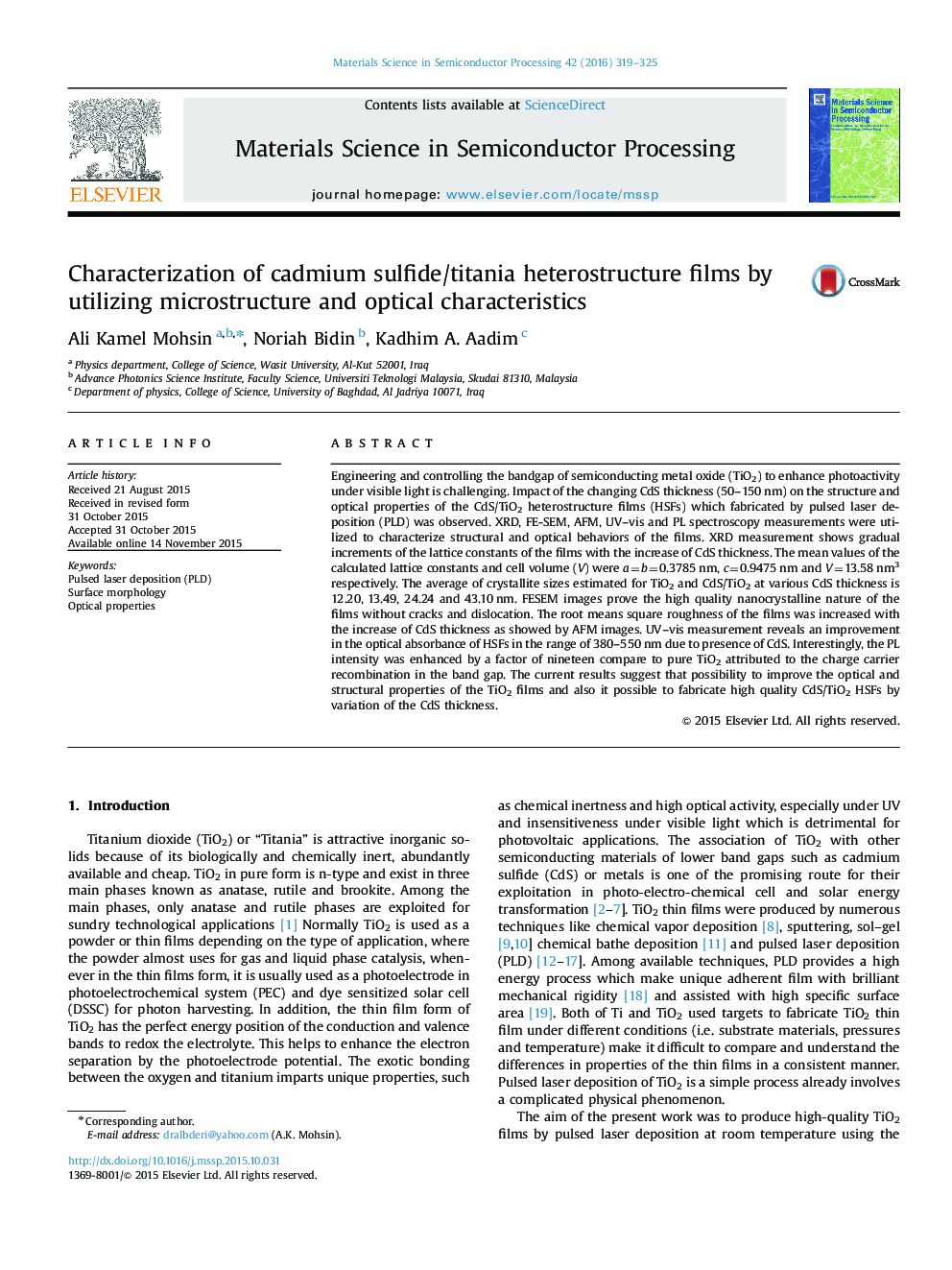| Article ID | Journal | Published Year | Pages | File Type |
|---|---|---|---|---|
| 726534 | Materials Science in Semiconductor Processing | 2016 | 7 Pages |
Engineering and controlling the bandgap of semiconducting metal oxide (TiO2) to enhance photoactivity under visible light is challenging. Impact of the changing CdS thickness (50–150 nm) on the structure and optical properties of the CdS/TiO2 heterostructure films (HSFs) which fabricated by pulsed laser deposition (PLD) was observed. XRD, FE-SEM, AFM, UV–vis and PL spectroscopy measurements were utilized to characterize structural and optical behaviors of the films. XRD measurement shows gradual increments of the lattice constants of the films with the increase of CdS thickness. The mean values of the calculated lattice constants and cell volume (V) were a=b=0.3785 nm, c=0.9475 nm and V=13.58 nm3 respectively. The average of crystallite sizes estimated for TiO2 and CdS/TiO2 at various CdS thickness is 12.20, 13.49, 24.24 and 43.10 nm. FESEM images prove the high quality nanocrystalline nature of the films without cracks and dislocation. The root means square roughness of the films was increased with the increase of CdS thickness as showed by AFM images. UV–vis measurement reveals an improvement in the optical absorbance of HSFs in the range of 380–550 nm due to presence of CdS. Interestingly, the PL intensity was enhanced by a factor of nineteen compare to pure TiO2 attributed to the charge carrier recombination in the band gap. The current results suggest that possibility to improve the optical and structural properties of the TiO2 films and also it possible to fabricate high quality CdS/TiO2 HSFs by variation of the CdS thickness.
